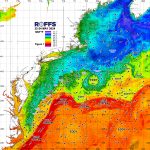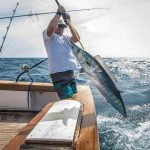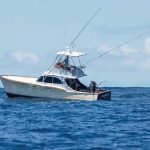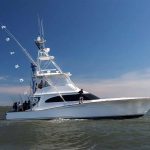ORCA has created a Campaign for a Clean Indian River Lagoon – With Science, we Can Make a Difference!
In 2005, internationally recognized deep-sea explorer Dr. Edith Widder founded the Ocean Research & Conservation Association (ORCA), a scientific based conservation nonprofit. “Our focus is on reversing the trend of oceanic and near-shore marine ecosystem degradation using the scientific integrity of a research institute,” said Dr. Widder.
ORCA’s goal is to revolutionize how scientists interact with communities and policy makers to reverse the frightening trend of water quality degradation as well as the general collapse of the aquatic ecosystems that surround us, including the Indian River Lagoon.
As the world’s first technology-based aquatic conservation organization, ORCA has developed a number of innovative tools to bring hi-tech to conservation and “wire the waters” providing visual data to stakeholders in easily understood water pollution gradient maps displayed on Google™ based maps. Two of our innovations are FAST™ and Kilroy™.
FAST™ (Fast Assessment of Sediment Toxicity), our broad spectrum bioassay, allows us to map toxic buildups in sediments of lakes, rivers, streams, estuaries and coastal oceans
The photo below shows a pollution gradient map of Central Vero Beach showing total nitrogen with red most and blue least concentrated. High nitrogen leads to algae blooms, murky water and plummeting fish populations that we are seeing throughout the Indian River Lagoon.
Kilroy™ (A low-cost wireless water monitoring device with a flexible array of sensors), supplies real-time data via cellular communications, providing the means to map water movement that tracks pollution to its source.
The photo below shows ORCA’s Kilroys™, which have the ability to control water samplers that are event-triggered, for example, in response to a rain storm or a turbidity front. When the sample is taken, Kilroy™ can notify the user by calling their cell phone.
Our simple 3 step plan for the lagoon.
1. Using FAST™, we will find water pollution sinks, or the places where pollution has accumulated in sediments.
2. Using Kilroy™, we will track water flow patterns around these pollution sinks to determine where the pollutant originated.
3. Finally, we will identify pollution and create color gradient maps to easily identify pollution hot spots. We will also help communities address issues through education, outreach and land use management programs.
Our Goals for the Campaign for a Clean Indian River Lagoon
With FAST™ (the assessment of sediment toxicity), ORCA will create a pollution map of the entire 156 miles of the Indian River Lagoon so we can identify the accumulation of pollutants at every site.
We will install 50 Kilroy™ water monitoring devices in the lagoon so we can track water flow patterns carrying pollution to the sinks.
ORCA’s science based technologies will identify pollutants, determine their source, and educate stakeholders, governments, lawmakers and citizens so the sources can be corrected or eliminated and nature can be restored.
For more information on ORCA and the Campaign for a Clean Indian River Lagoon, visit www.TeamORCA.org. ORCA is a non-profit, non-governmental conservation organization tax exempt under Section 501(c)(3) IRS.








